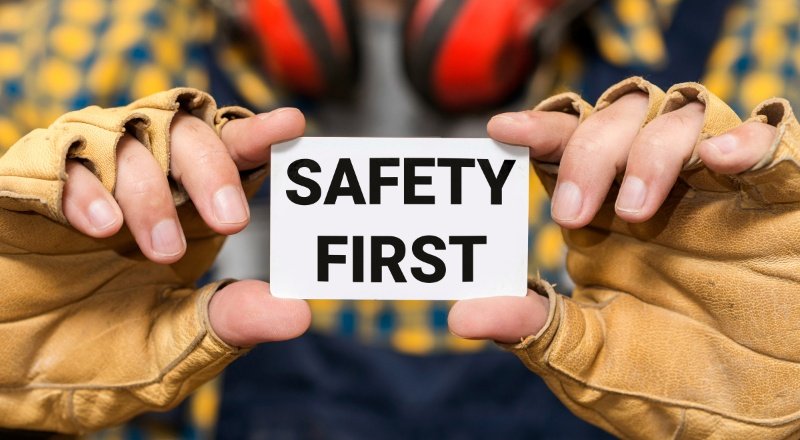Nepal’s top priority is workers’ safety and well-being, and the Labour Act 2074 makes this clear by emphasising the importance of occupational health and safety (OHS) in every workplace.
The law requires employers to create a safe, clean, and healthy working environment by providing proper safety equipment, offering training, and addressing potential hazards promptly.
The government initially introduced the occupational health and safety policy concept in 2076, aiming to make the workplace healthy, safe, organised, and dignified.
From the concern of the employees, workplace safety is a shared responsibility when both work together. This will help to prevent accidents, protect health, and build a more productive and respectful working environment for everyone.
What is Occupational Health and Safety?
Occupational Health and Safety (OHS) in Nepal refers to laws, policies, and practices designed to protect workers’ health, safety, and well-being in all types of jobs.
It significantly prevents workplace injuries, illnesses, and accidents while promoting a positive, healthy, and flexible working environment.
The need for a strong OHS system has become increasingly important in countries like Nepal, which continues to develop across various sectors such as construction, agriculture, and services.
The main aim of OHS is to reduce harm and support workers’ physical and mental well-being. These measures include ensuring clean & hazard-free workplaces, providing adequate safety equipment, and providing training so employees know how to work safely.
Additionally, employers have a legal and moral obligation to maintain safe working conditions, while workers are also expected to follow safety protocols and report any risks or unsafe practices.
The Labour Act 2074, chapter 12, has provisions relating to the Government of Nepal, which has been strengthening its efforts to improve workplace safety standards. However, challenges such as limited awareness, lack of resources, and weak enforcement remain.
What is the Legal Framework for Occupational Health and Safety?
The Labour Act, 2074, is the main law which outlines workers’ rights, employer responsibilities, and occupational health and safety standards.
Here is a breakdown of its key sections:
1. Health and Safety Policy
According to Section 74, employers must develop a written occupational health and safety policy tailored to their organisation. This policy must be registered with the Department of Labour and implemented effectively across all levels of the workplace.
2. Responsibility of the Employer
Under Section 75, employers are responsible for:
- Maintaining a safe working environment.
- Ensuring safe operation, handling, storage, and transportation of substances.
- Providing necessary personal protection equipment (PPE).
- Providing safety training to workers.
- Preventing health hazards related to noise, dust, and dangerous machinery.
3. Protection for Others and the Environment
In accordance with Section 76, employers must also consider the safety of individuals who are not employees but may be affected by workplace operations.
Additionally, they are obliged to control pollution and manage harmful chemical substances responsibly.

4. Formation of the Health and Safety Committee
By Section 79, in workplaces with 20 or more employees, a Health and Safety Committee must be established. This committee includes representatives from employers and workers and oversees and advises on safety practices.
5. Provisions for Immediate Danger
Section 80 provides that workers can halt work and inform the respective employer of an immediate threat to health or life. The employer must address the risk and notify the relevant authorities, and workers must not be penalised for taking such protective action.
6. Special Provision for Pregnant Workers
Under Section 81, pregnant employees should not be given work that may harm their health or pregnancy and should be provided with suitable, favourable treatment and safe job responsibilities during pregnancy.
Why is Occupational Health and Safety (OHS) Important?
OHS is essential because human beings are valuable assets of any organisation, so it protects them. A safe and healthy workplace prevents illness and injuries. It helps support workers’ physical and mental well-being.
Unsafe working conditions can lead to accidents, long-term health issues, and even loss of life. This affects workers and their families. Additionally, it causes monetary loss to employers due to medical costs, legal liabilities, and loss of skilled labour. OHS measures help reduce these risks by identifying hazards early, ensuring proper training, and maintaining a clean, well-managed work environment.
From a legal point of view, following OHS standards ensures compliance with labour laws and avoids penalties. The Labour Act gives proper guidelines for employers to uphold safety measures. This shows that OHS is not just a best practice but a legal obligation.
Conclusion
Occupational Health and Safety (OHS) is a legal requirement and a crucial pillar of Nepal’s productive and respectful workplace. With the Labour Act 2074 and the introduction of the national OHS policy in 2076, Nepal has taken significant steps to prioritise workers’ safety, dignity, and well-being.
However, proper implementation, awareness, and shared responsibility between employers and employees remain key to overcoming existing challenges. By ensuring clean, hazard-free environments, adequate training, and effective safety measures, workplaces can prevent accidents and health issues and foster trust, efficiency, and long-term growth.
Frequently Asked Questions (FAQs)
Q. What is OHS?
A. Occupational Health and Safety (OHS) is about keeping workers safe and healthy by preventing workplace accidents and illnesses.
Q. Why is OHS important?
A. OHS protects workers, boosts productivity, and reduces legal and financial risks.
Q. What does the Labour Act 2074 say about OHS?
A. According to Labour Act 2074, OHS requires safe workplaces, proper safety gear, training, and forming safety committees.
Q. What is a Safety and Health Committee?
A. The Safety and Health Committee is a group of employees that includes more than 20 staff members and oversees health and safety measures.
Q. What are the challenges for OHS?
A. The challenges of OHS are mainly a lack of awareness among employees and employers, a lack of resources, and weak law enforcement.




